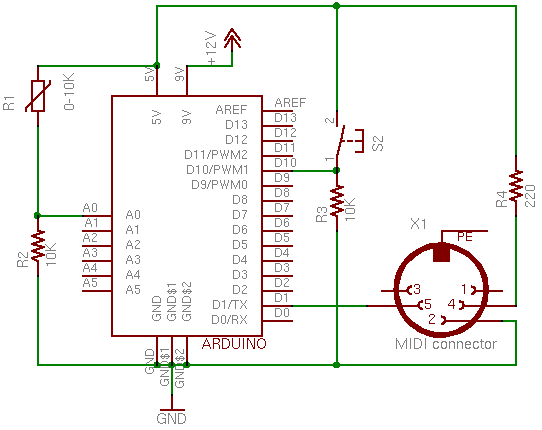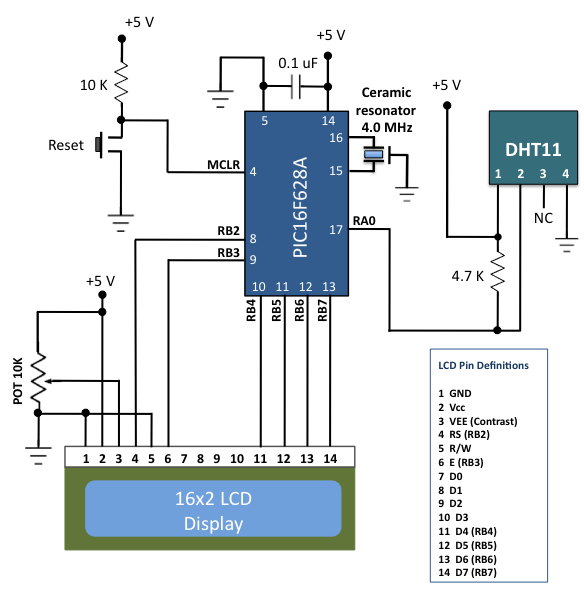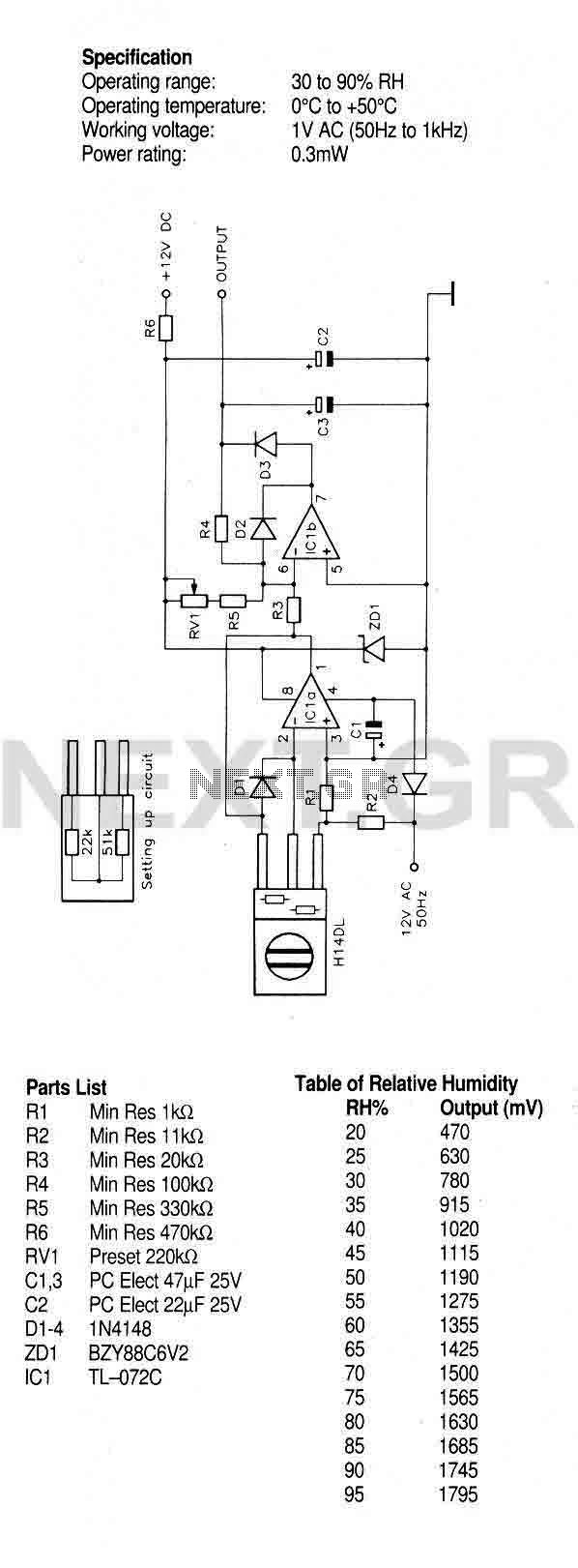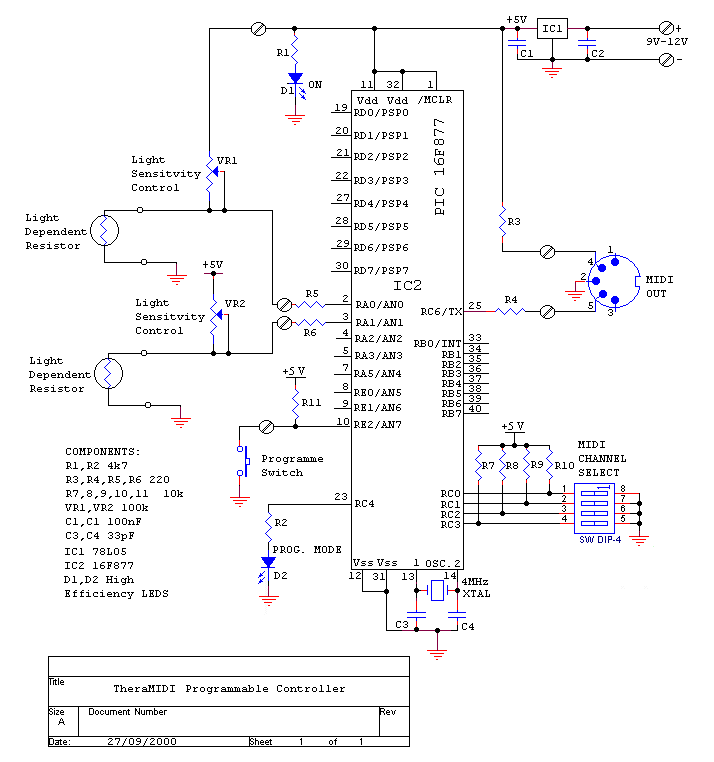
MIDI to Sync24 Convertor
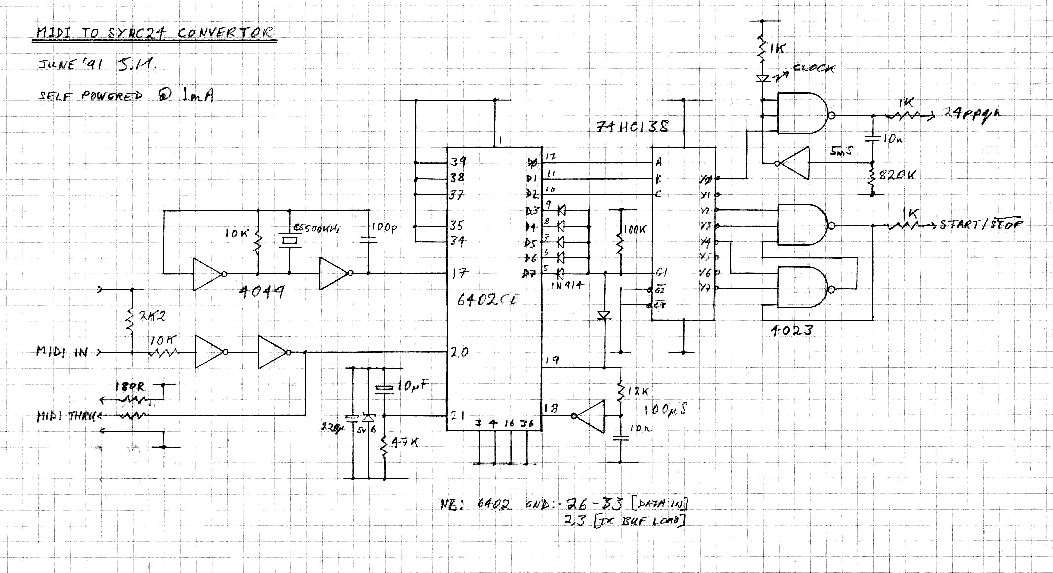
This self-powered circuit converts MIDI clocks to DIN sync24. This type of clock is used on old Roland gear and provides a 24 pulses per quarter note clock and a start/stop signal.
The circuit functions by receiving MIDI clock signals, which are digital pulses sent at a specific rate to synchronize electronic musical instruments. The MIDI clock operates at a frequency of 24 pulses per quarter note, which is essential for maintaining tempo across devices. The self-powered nature of the circuit allows it to operate independently without requiring an external power source, making it particularly suitable for mobile setups or environments where power availability is limited.
The conversion process involves the detection of MIDI clock signals, which are typically transmitted via a 5-pin DIN connector. The circuit includes a microcontroller or dedicated integrated circuit that interprets these MIDI signals. Upon receiving a MIDI clock signal, the circuit generates a corresponding DIN sync24 output. This output consists of 24 square wave pulses for each quarter note, effectively translating the MIDI clock into a format compatible with older Roland gear and other devices that utilize DIN sync.
Additionally, the circuit incorporates a start/stop signal feature. This is crucial for synchronizing playback or recording between devices. When the MIDI clock starts, a designated signal is sent to indicate the start of playback, while a separate signal is triggered to denote the stop condition. This ensures that all connected devices remain in sync, allowing for cohesive performance across multiple instruments.
Overall, this self-powered circuit serves as a vital link between modern MIDI technology and vintage equipment, facilitating the integration of various musical devices and enhancing the versatility of electronic music setups.This self-powered circuit converts MIDI clocks to DIN sync24. This type of clock is used on old Roland gear and provides a 24 pulses per quarter note clock and a start/stop signal. 🔗 External reference
The circuit functions by receiving MIDI clock signals, which are digital pulses sent at a specific rate to synchronize electronic musical instruments. The MIDI clock operates at a frequency of 24 pulses per quarter note, which is essential for maintaining tempo across devices. The self-powered nature of the circuit allows it to operate independently without requiring an external power source, making it particularly suitable for mobile setups or environments where power availability is limited.
The conversion process involves the detection of MIDI clock signals, which are typically transmitted via a 5-pin DIN connector. The circuit includes a microcontroller or dedicated integrated circuit that interprets these MIDI signals. Upon receiving a MIDI clock signal, the circuit generates a corresponding DIN sync24 output. This output consists of 24 square wave pulses for each quarter note, effectively translating the MIDI clock into a format compatible with older Roland gear and other devices that utilize DIN sync.
Additionally, the circuit incorporates a start/stop signal feature. This is crucial for synchronizing playback or recording between devices. When the MIDI clock starts, a designated signal is sent to indicate the start of playback, while a separate signal is triggered to denote the stop condition. This ensures that all connected devices remain in sync, allowing for cohesive performance across multiple instruments.
Overall, this self-powered circuit serves as a vital link between modern MIDI technology and vintage equipment, facilitating the integration of various musical devices and enhancing the versatility of electronic music setups.This self-powered circuit converts MIDI clocks to DIN sync24. This type of clock is used on old Roland gear and provides a 24 pulses per quarter note clock and a start/stop signal. 🔗 External reference
